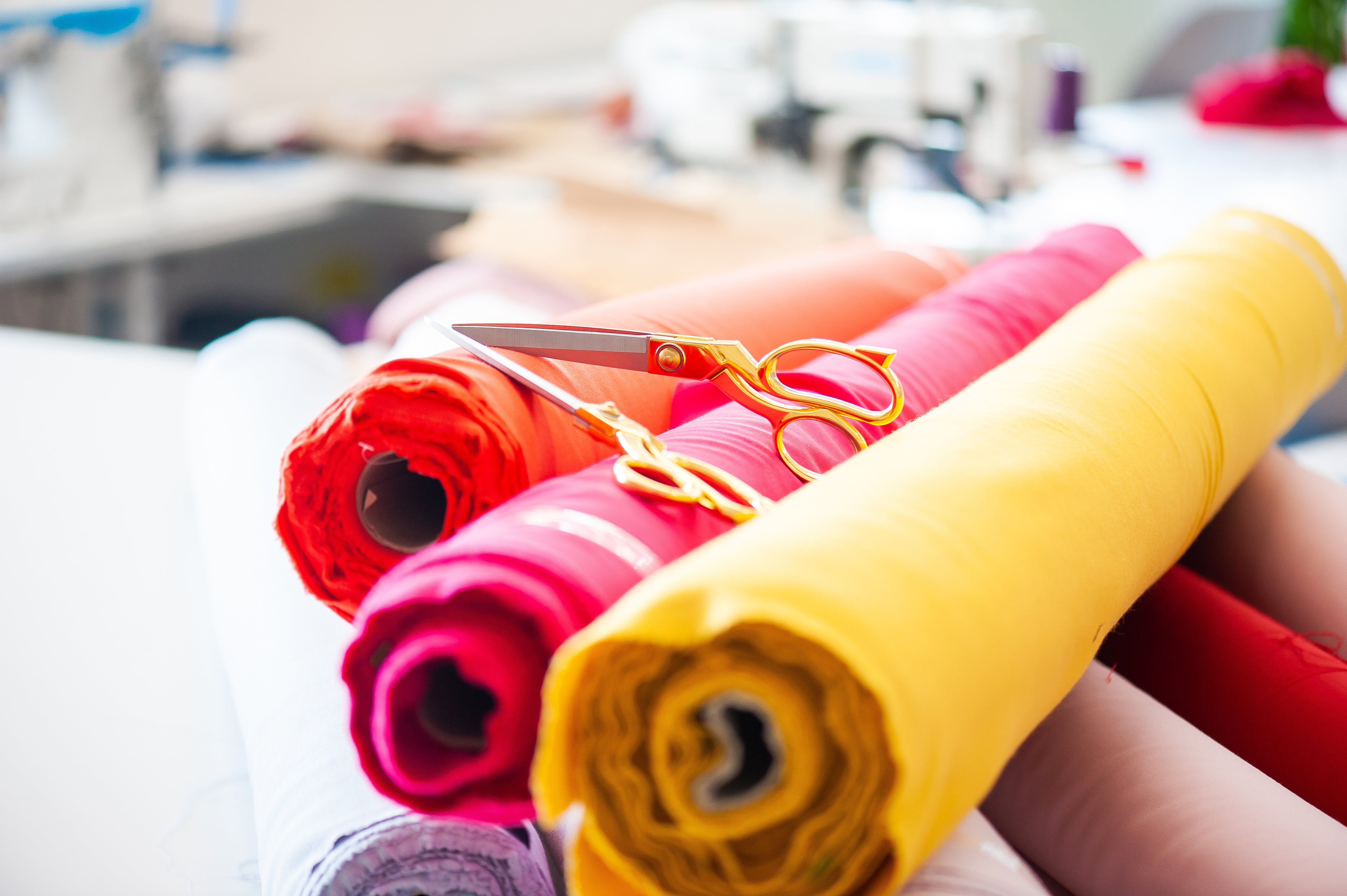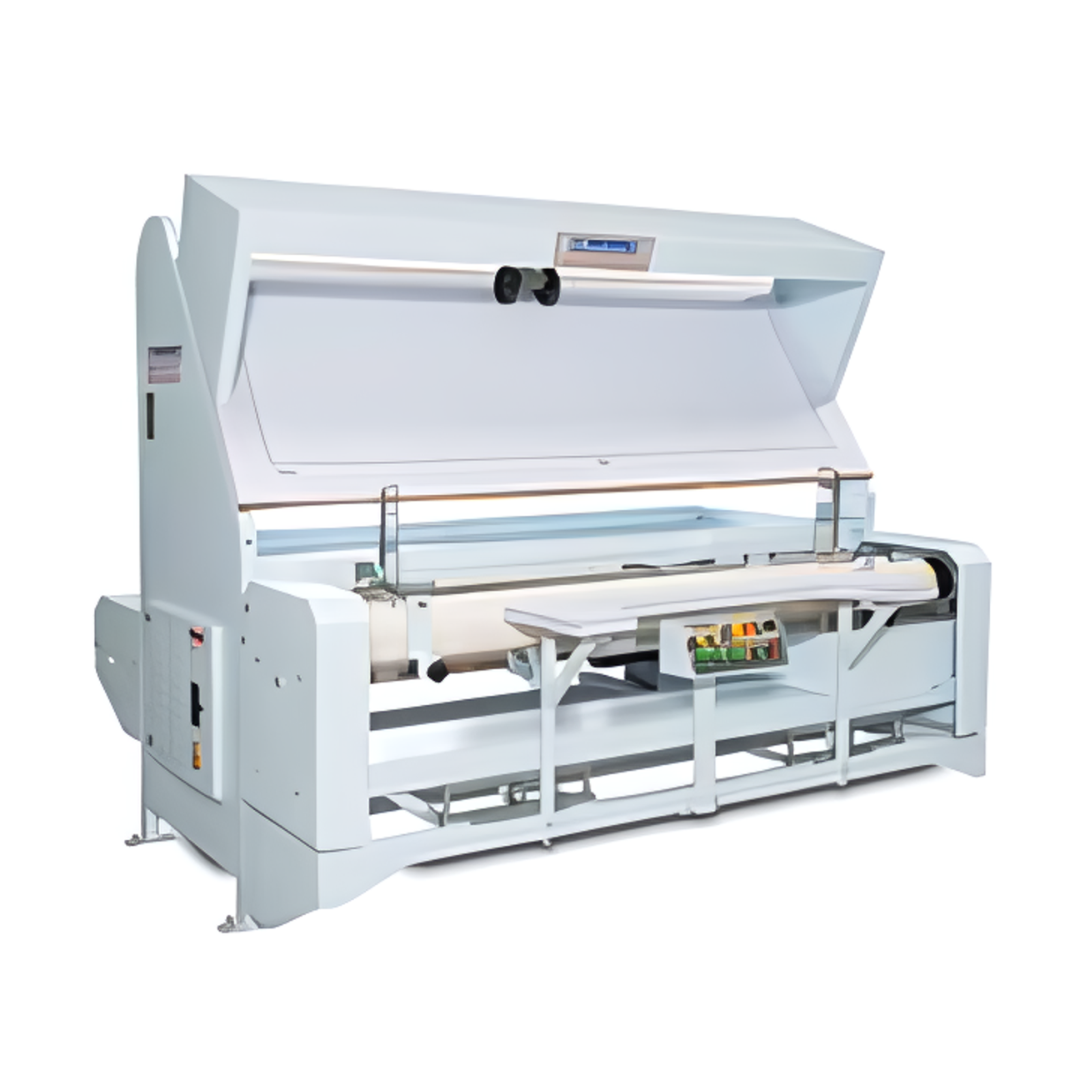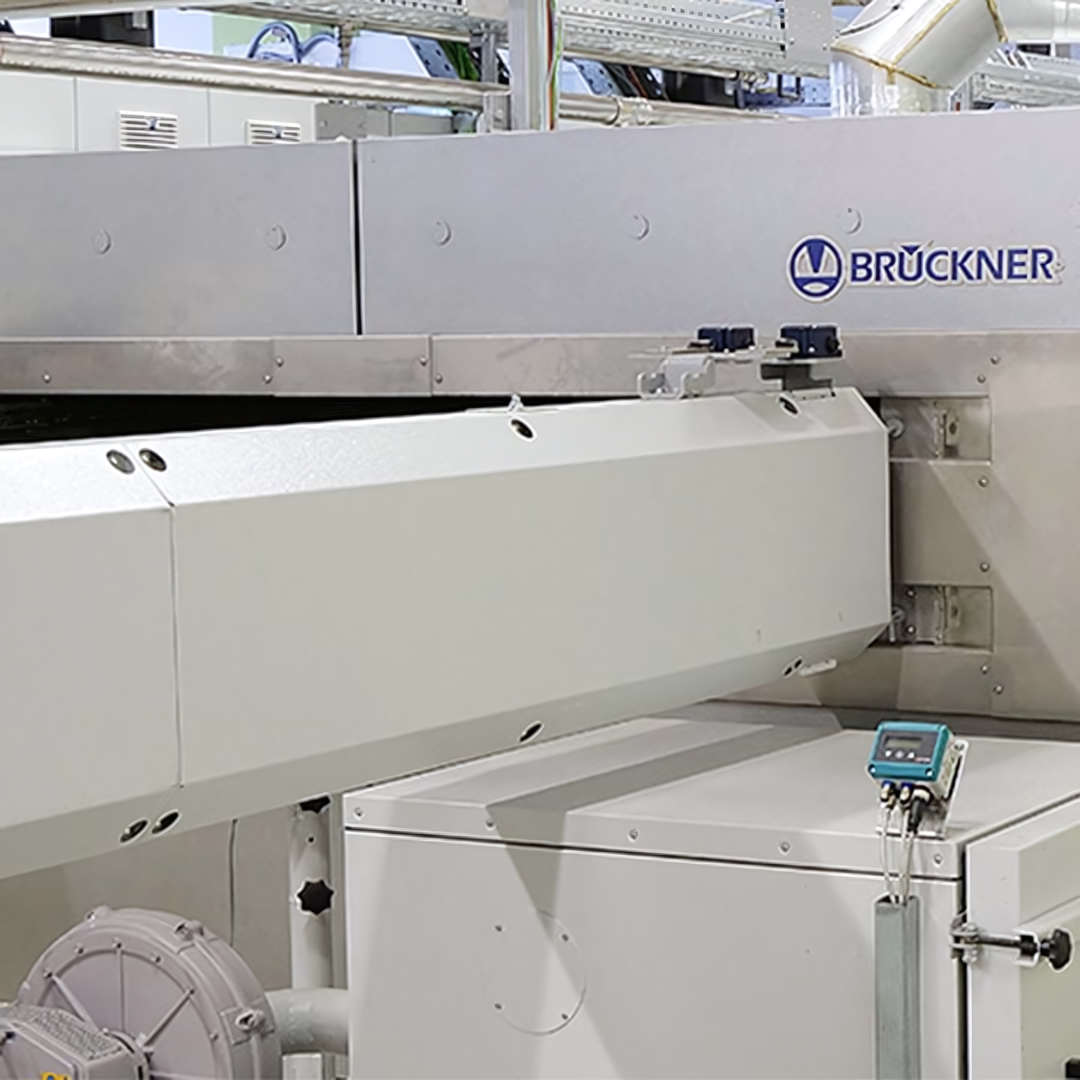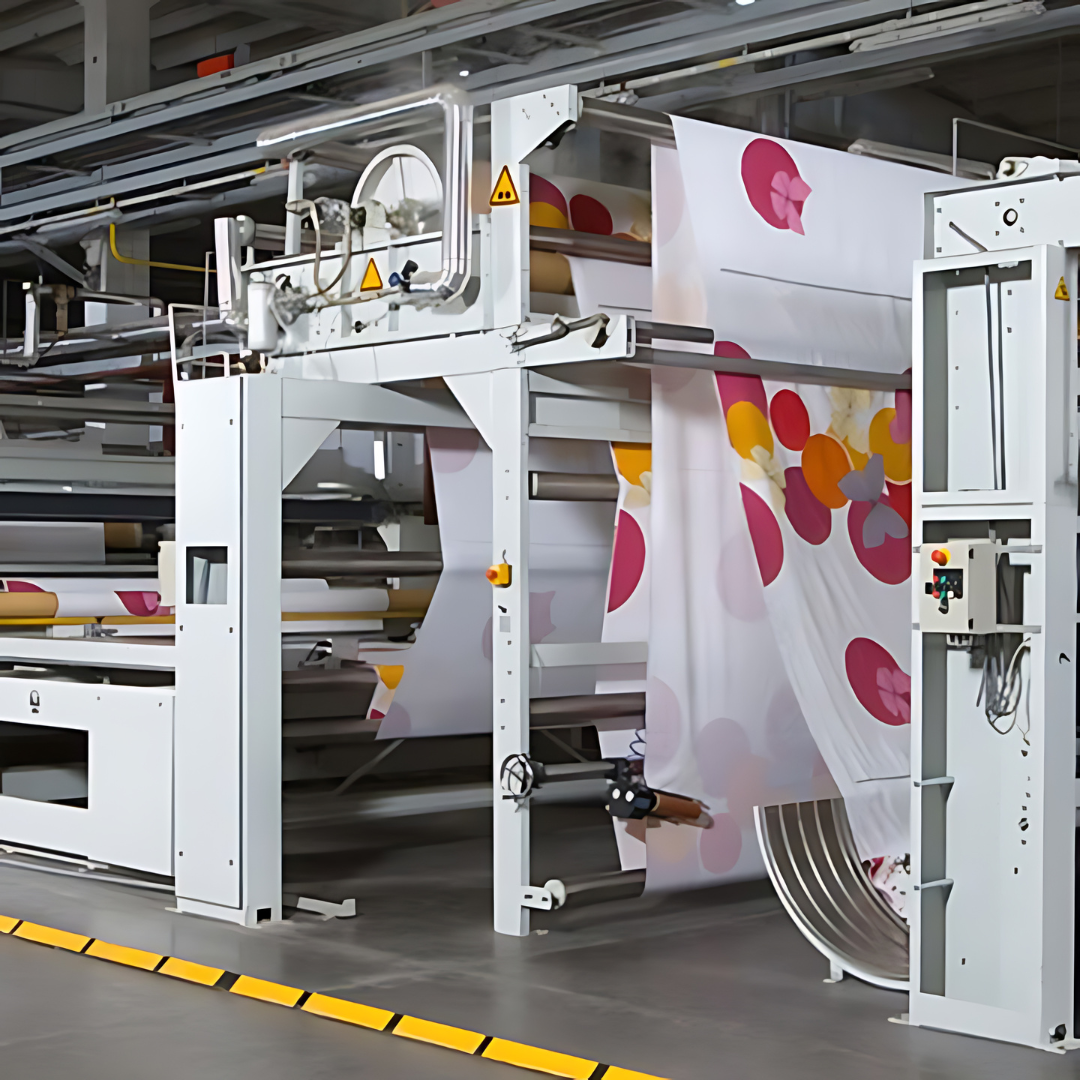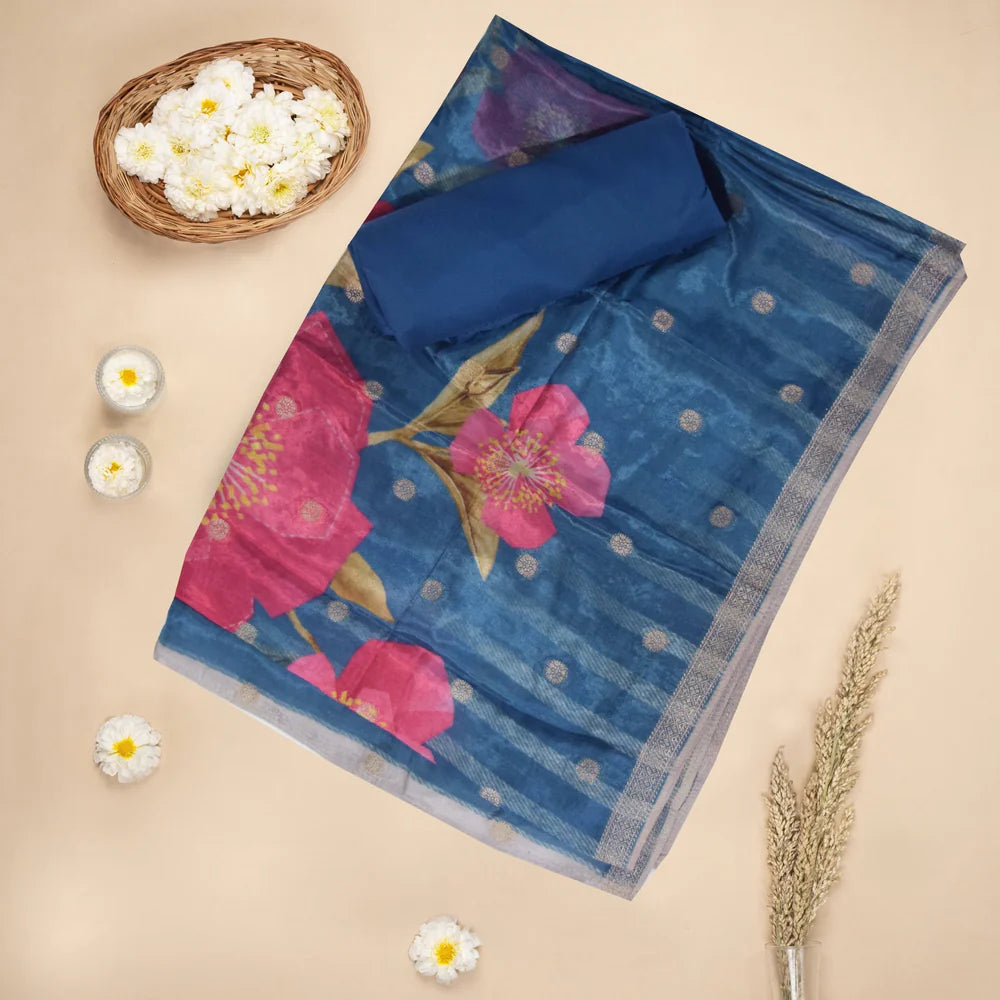Greige
After greige fabrics have been received in the greige room by the processing mills the bales / Rolls are opened and inspected. It is checked and verified whether the greige fabrics meets the specific standards, and is also checked for all weaving defects, which are marked out. Fabric inspection involves following processes:
1. Visual inspection
2. Mending
Inspection
Visual inspection is carried out through the inspection table which consists of a frosted glass with lights behind and above it. The fabric imperfections like thick places, defects, yarn knots, stains and other flaws are marked. The fabric quantity is also checked.
Mending is the actual repair of imperfections like stains, holes, hick places, loose ends and protruding threads of warp and weft are
detected and mended.
They are then batched together and each lot is given a number and they are stamped.
Preparatory Operations
The main objectives of preparation treatments of textile materials are;
- Remove impurities from the fabric, both naturals and / or those added during production that may interfere in subsequent dyeing and / or finishing process.
- Improve the ability of the fabrics to absorb water solutions of dyes and chemicals.
- Impart the proper brightness or whiteness to fabrics according to need.
Singeing
Before the removal of impurities by wet process,fabrics are usually singed. In this process fuzzy and protruding fibre ends are removed by burning them off. Singeing is done to fabrics that require a clear and smooth surface for printing, and it is usually performed on both sides of the fabric. Its advantages are:
- Improves surface appearance of fabrics and also reduces soiling.
- Reduces the fogginess caused by differential light reflection by protruding fibres from the surface and improves the appearance of the dyed fabrics.
- Reduce its tendency to pill.
Mercerization
Mercerization is a textile finishing treatment for cellulose fabric and yarn, mainly cotton and flax, which improves dye uptake and tear strength, reduces fabric shrinkage, and imparts a silk-like lustre.
Scouring
Scouring or washing is a cleaning treatment, which removes most of the impurities. This includes sizing residues, wax, oil, and other foreign substances like sand and dust.
Scouring is an essential pre treatment for the subsequent finishing stages that include bleaching, dyeing, and printing.
Bleaching
Bleaching is the process of removing natural colouring matters that cannot be removed from fibres by extensive scouring. Bleaching is
also required for fabrics that are to be dyed in pastel shades, in particular light blues and violets, and for materials to be dyed in colours with maximum brightness. The main objective of bleaching process is, to achieve the desirable level of whiteness with minimum damage to the fibres, and within the
shortest possible time.
Fabric Ready for Dyeing /Printing
Ready for Dyeing or RFD fabrics are those fabrics which are processed through singeing, mercerizing, scouring and bleaching to remove wax, oils, darts and sizing material applied before weaving to make the fabric ready for dyeing or printing.
The above fabric is then sent for further process i.e. Dyeing, Rotary printing, Digital printing and Heat transfer printing (Paper printing).
Dyeing
The dyeing process is complex and requires a high degree of knowledge and skill. Dyeing requires clean textile substrates in order to maximize product quality. In preparation, desizing and scouring are required processes for woven fabric. Scouring and bleaching are necessary for whites, pastels and very bright shades. Clean process water is critical for producing quality products.
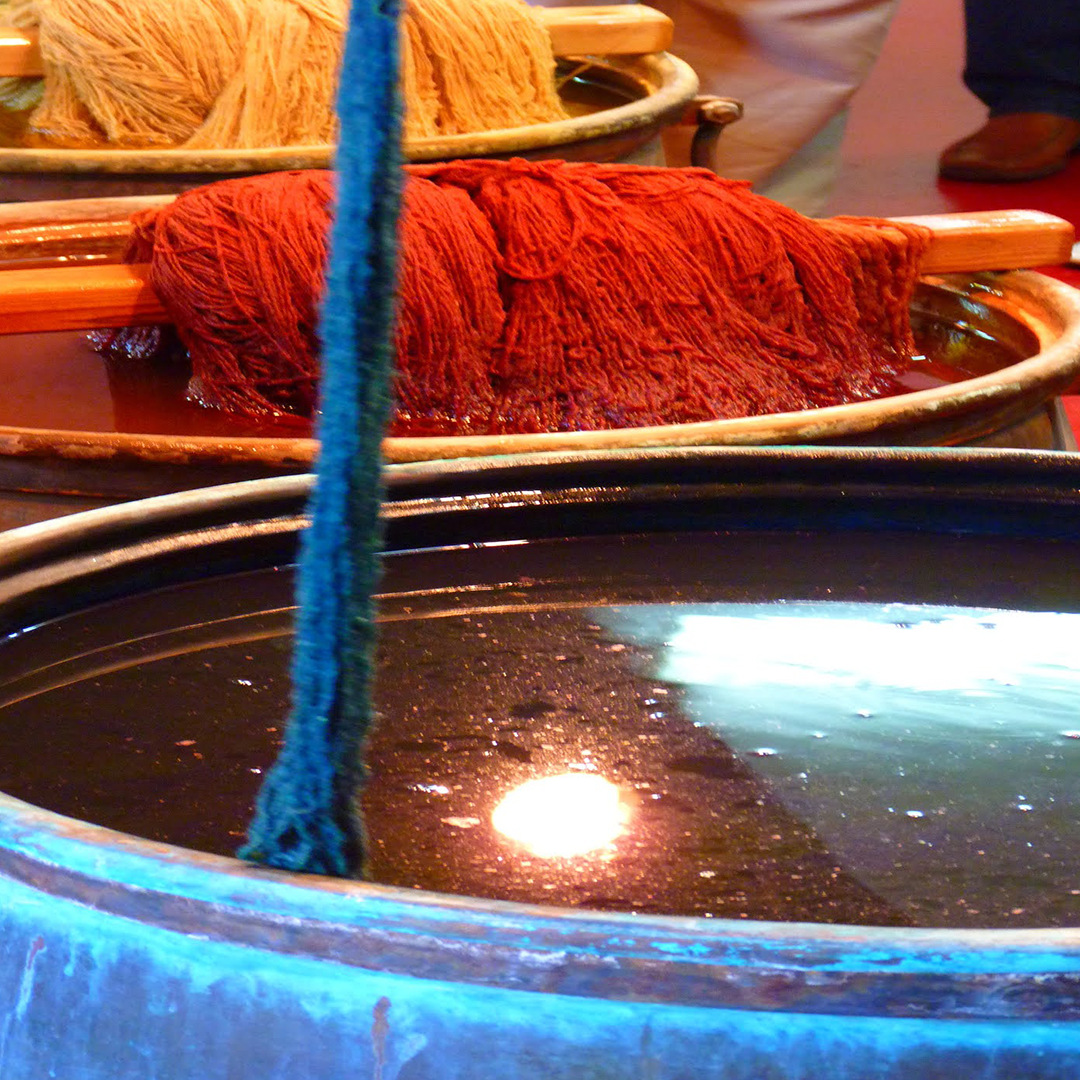
Dyeingquality and performance are directly controlled by time, temperature, pH, and
chemical auxiliaries. Dyes are fibre specific and have their individual advantages and disadvantages. They must be processed under careful control.Dyeing equipment is designed for specific types of textile substrates and, in
certain cases, specific dyeing conditions.
The goal of dyeing is to produce the highest quality on-shade product which meets all of the customer's specification for colourfastness and colour durability. This dyed product should be produced in the shortest amount of time, using the least amount of energy, generating minimum water waste.
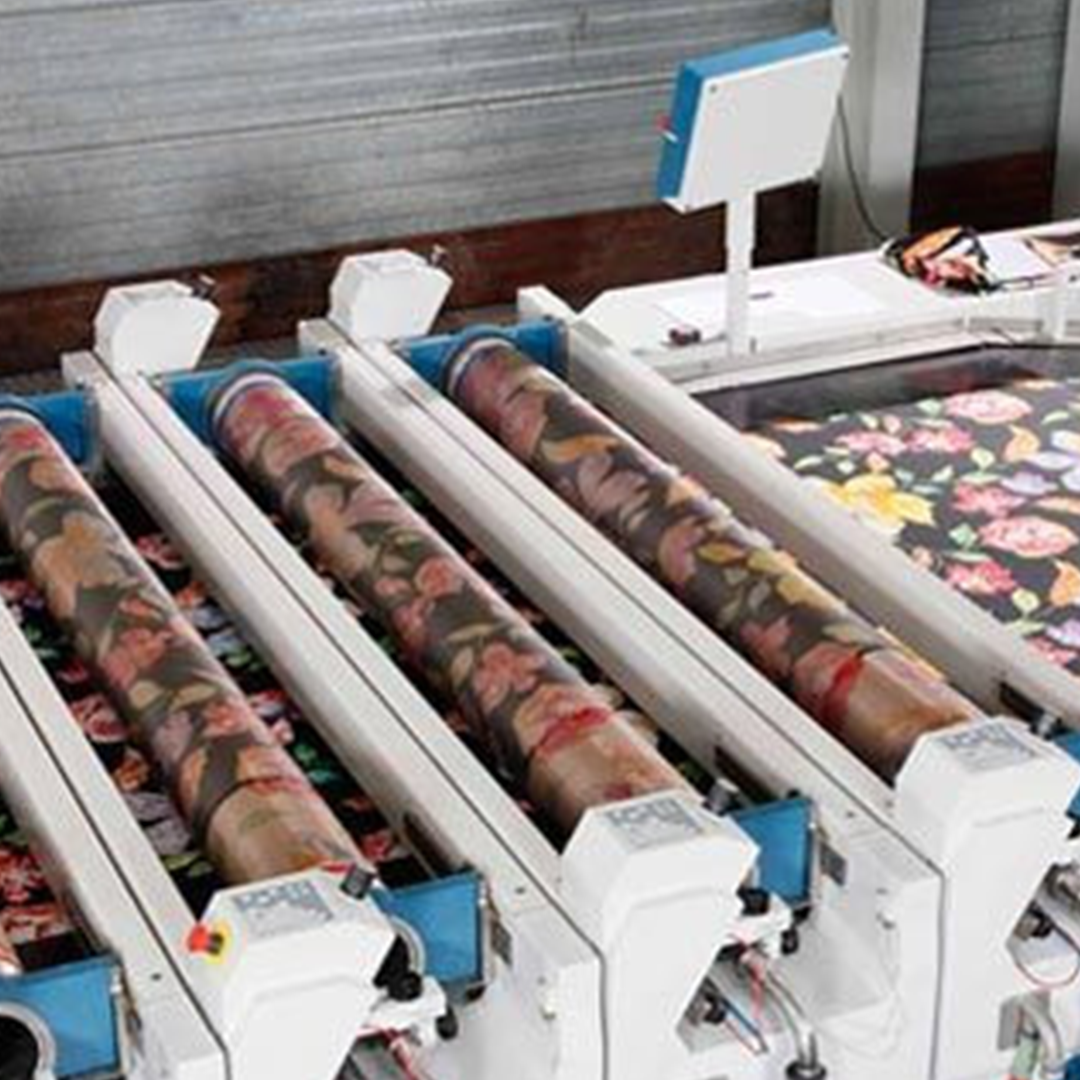
Rotary Screen Printing
Rotary screen printing is a continuous method of printing in which a perforated Nickel cylindrical screen applies a colorant
made from either pigment or dye. The colorant is forced from the interior of the cylindrical screen and onto the fabric. A special pump automatically feeds a paste inside the perforated cylinder (or spherical screen) and, as the screen rotates, a squeegee device inside the screen pushes the dye through the screen onto the fabric. Each screen is independently driven separate colours can be applied.
Rotary screen printing is the go-to process for many companies and brands today, simply due to its superior production capacity. The rotary screens can operate at fast speeds and can print up to 50 - 100 meters per minute. When it comes to long-runs and specialty surface applications, the rotary screen printing process offers incomparable results.
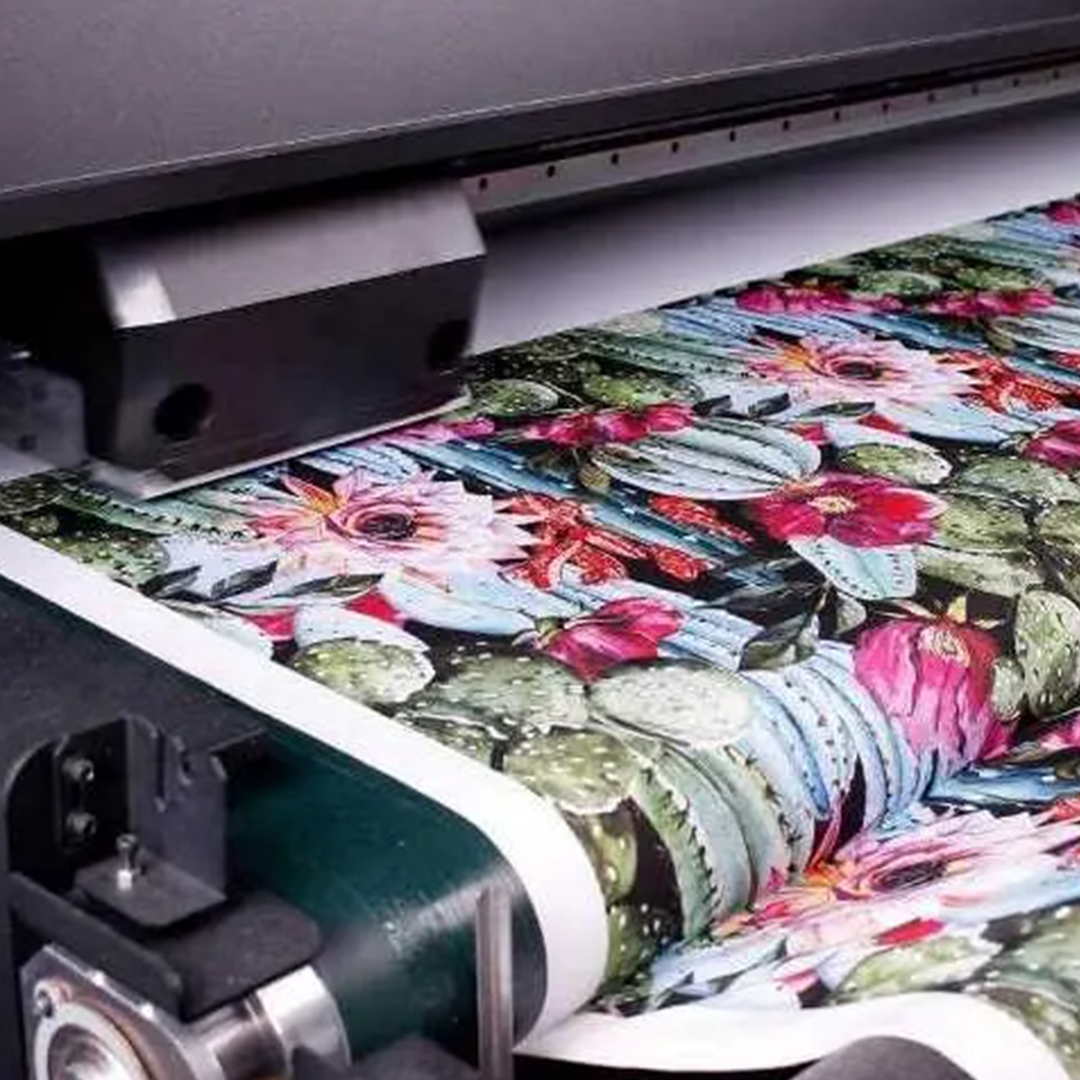
Digital Textile Printing
Digital Textile Printing is a process of printing on textiles and garments using inkjet technology to print colorants onto fabric. This process allows for single pieces, mid to small-run cycle production and even long-runs as an alternative option to screen printed fabric.
The first step in digital textile printing is to pre-treat the fabric with liquid solutions that prepare it to accept the dye and better absorb the colour. Then it is fed through the printer, which sprays the dye onto the textile with tiny droplets. The final step is fixing the fabric, a process that ensures the permanency of the design. Depending on the type of textile and type of dye, fixing may involve steam, dry heat, or pressure. Sometimes it requires a combination of two or more of those.
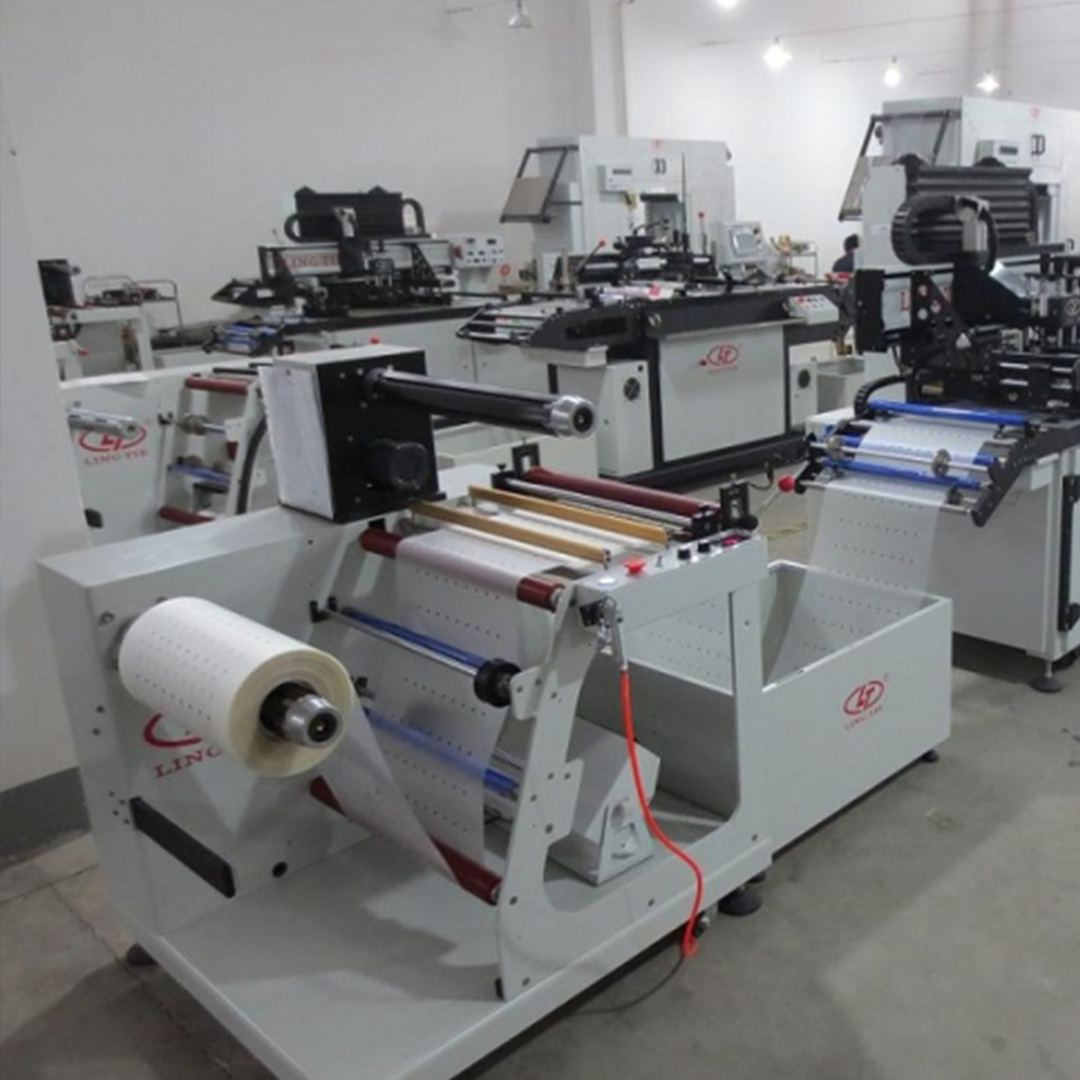
Heat Transfer Printing
Transfer printing is the term used to describe textile and related printing processes in which the design is first printed onto a paper and later transferred by a separate heat process to a textile. The design on paper is transferred to fabric by Heat Transfer Printing, an electrically heated cylinder is used that presses a fabric against a printed paper placed on a heat-resistant blanket.
Most transfer-printing processes enable textile printing to be carried out using simple, equipment, without effluent production or any need for washing-off.
Steamer/Loop
Dyes and Ink on the printed fabrics are usually fixed by steaming processes, the steam providing the moisture and rapid heating that brings about the transfer of dye molecules from the thickener film to the fibre within a reasonable time.
Loop is continuous process equipment in which the cloth is handled in loop form with the least contact and transported in a tensionless manner. It is a versatile machine by which hot air curing, saturated steaming along with steam is involved. According to process temperature, heating value lines are kept open and temperature is set. The speed of the machine is set as per process time and loop length. Pieces of printed fabric (single or double web) are stitched to the leader fabric and fed into the chamber.
After Washing
When printing with dyestuff, the printed fabric is thoroughly washed, then dried after fixation. This step is necessary to remove the thickener, alkali, and other components of the print paste left on the fabric surface after fixation. If not removed, these components could interfere with subsequent finishing processes.
Stenter
The stenter machine is a commonly used machinery within the textile finishing section. The Stenter machine consists of heated chambers, adjustable to the
width of the fabric being treated. The fabric is fed into the heated chamber and supported at either selvedge by a series of stenter pins or clamps, which help maintain its position as it is moved through the drying chambers.
A stenter is primarily used for the following:
- Drying and adjustment of the width.
- Application of softeners and various chemical finishes. Most of the textile finishes are applied to the stenter machine.
- Curing, stenter is used in curing the fabrics.
- Controlling shrinkage by overfeeding/increasing input and controlling output speeds.
- Heat setting helps in stabilizing synthetic fabrics such as polyester, nylon, and spandex.
- Bowing and skew control especially in stripe fabrics
Calendering
Calendering is a finishing process
used to make one or both surfaces of the fabric smooth and shiny. The fabric is passed through high temperatures and pressure through fast-moving stainless steel cylinders.
Sanforising
The cloth is continually fed into the sanforizing machine and therein moistened with either water or steam. A rotating cylinder presses a rubber sleeve against another, heated, rotating cylinder. The fabric to be treated is transported between rubber sleeve and heated cylinder and is forced to follow this brief compression and lateral expansion, and relaxation.
The aim of the process is to shrink a fabric which does not shrink significantly during production, cutting, ironing, sewing, or especially, by wearing and washing of finished clothes. Cloth and articles processed through sanforizing may be labelled to have a specific shrink-proof value of under 1%.
Unstictched Garment
The processed fabrics are then sent to cut department. Here once again the fabric are visually checked for discolouration, misprints, damage during process, etc. before they are cut to size and sent for further value addition like embroidery, hand work, lace fixing, foil work, hemming, etc.
Once the value addition is completed as per the design of the articles then the fabrics are sent for packing and despatch.

